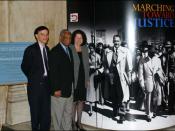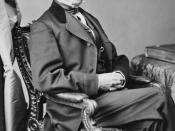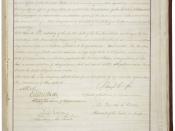In 1776 Abigail Adams wrote to her husband, John, who was attending the Continental Congress in Philadelphia, asking that he and the other men--who were working on the Declaration of Independence--"Remember the Ladies." John obviously found the humor in this because The Declaration's wording specifies that "all men are created equal." (http://www.geocities.com:0080/Heartland/4678/kate.html). It can be said that those 4 words alone was the fire behind the world's first women's rights convention held in Seneca Falls, New York, in July of 1848. This meeting would eventually lead to the women's rights movement that followed. In the eyes of the law women were not created equal to men and the law dealt with women in just that way?unequal. The problem is that this country was built by men with "manly" ideas. The 4 words "all men are created equal" gives some incite into what our forefathers were thinking when they wrote The Constitution.
Besides common law that was passed down, this statement would be the beginning of inequality created by the law that women would have to face. The drafters of The Constitution specifically wrote the word "men" instead of choosing a more sex neutral word such as "people". I believe their reason behind this was biblically influenced and dates back to Adam and Eve were the man is the provider, and protector, and the woman is to stay at home to raise children and "be protected".
One can take the statement "all men are created equally" and establish that if "all men are created equally", then a woman, is to be measured up to a man and is in turn deemed unequal. This has forced women to attempt to gain equality even though they are obviously not equal when it comes to sex. MacKinnon says this best "The legal mandate...


